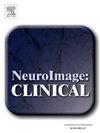运动后脑年龄差距的缩小反映了精神分裂症谱系障碍的临床改善。
IF 3.6
2区 医学
Q2 NEUROIMAGING
引用次数: 0
摘要
精神分裂症谱系障碍(SSD)与大脑加速老化有关,反映在大脑年龄差距的增加上。这一差距作为一种生物标志物,表明大脑健康状况较差、认知缺陷和特定症状领域的严重程度较高。锻炼有望作为一种辅助疗法,通过潜在地促进大脑恢复来减轻这些缺陷。然而,运动后大脑健康的整体改善程度,以及它们的预测因素和与症状群的关系,还有待确定。这项研究检验了大脑年龄差距指标作为运动后大脑恢复的定量指标。为了实现这一目标,我们汇总了两项随机对照试验的数据,分析了SSD患者的基线(n = 134)和运动后3或6个月(n = 46)数据。我们的研究结果显示,基线体重指数(BMI)较高的患者表现出更大的大脑恢复,这一点可以通过运动后大脑年龄差距的缩小来证明。此外,大脑年龄差距的变化与阴性症状和认知的改善有关,这表明大脑预测年龄的减少可能反映了症状的缓解,特别是在阳性症状之外的领域。这些结果强调了BMI在脑健康中的重要性,支持使用脑年龄差距作为跟踪临床相关脑恢复的替代指标,并强调了分层干预和联合生活方式改变的必要性,以提高SSD的预后。本文章由计算机程序翻译,如有差异,请以英文原文为准。
Brain age gap reduction following exercise mirrors clinical improvements in schizophrenia spectrum disorders
Schizophrenia spectrum disorders (SSD) are associated with accelerated brain aging, reflected in an increased brain age gap. This gap serves as a biomarker, indicating poorer brain health, cognitive deficits, and greater severity in specific symptom domains. Exercise holds promise as an adjunct therapy to mitigate these deficits by potentially promoting brain recovery. However, the extent of overall improvements in brain health following exercise, along with their predictors and relationships to symptom clusters, are yet to be determined. This study examined the brain age gap metric as a quantitative indicator of brain recovery in response to exercise. To achieve this, we aggregated data from two randomized controlled trials, analyzing baseline (n = 134) and 3- or 6-month post-exercise (n = 46) data from individuals with SSD. Our findings revealed that patients with a higher baseline body mass index (BMI) demonstrated greater brain recovery, as evidenced by a reduced brain age gap post-exercise. Furthermore, changes in the brain age gap were associated with improvements in negative symptoms and cognition, suggesting that reductions in brain-predicted age may reflect symptom relief, particularly in domains beyond positive symptoms. These results underscore the importance of BMI in brain health, support using the brain age gap as a surrogate marker for tracking clinically relevant brain recovery, and highlight the need for stratified interventions and combined lifestyle modifications to enhance outcomes in SSD.
求助全文
通过发布文献求助,成功后即可免费获取论文全文。
去求助
来源期刊

Neuroimage-Clinical
NEUROIMAGING-
CiteScore
7.50
自引率
4.80%
发文量
368
审稿时长
52 days
期刊介绍:
NeuroImage: Clinical, a journal of diseases, disorders and syndromes involving the Nervous System, provides a vehicle for communicating important advances in the study of abnormal structure-function relationships of the human nervous system based on imaging.
The focus of NeuroImage: Clinical is on defining changes to the brain associated with primary neurologic and psychiatric diseases and disorders of the nervous system as well as behavioral syndromes and developmental conditions. The main criterion for judging papers is the extent of scientific advancement in the understanding of the pathophysiologic mechanisms of diseases and disorders, in identification of functional models that link clinical signs and symptoms with brain function and in the creation of image based tools applicable to a broad range of clinical needs including diagnosis, monitoring and tracking of illness, predicting therapeutic response and development of new treatments. Papers dealing with structure and function in animal models will also be considered if they reveal mechanisms that can be readily translated to human conditions.
 求助内容:
求助内容: 应助结果提醒方式:
应助结果提醒方式:


